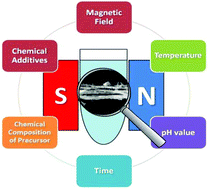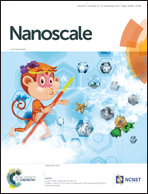Magnetic-field-induced synthesis of magnetic wire-like micro- and nanostructures
Abstract
A lot of physical and chemical preparation methods of one-dimensional (1D) structures are known today. Most of them use highly advanced technology or quite complex chemical reagents. This results in their high costs and difficulties with their implementation to a large industrial scale. Hence, new, facile and inexpensive approaches are still sought. One alternative to wire-like structure production is based on the chemical reduction reactions combined with an external magnetic field, which acts as an independent synthesis parameter. This approach is commonly called magnetic-field-assisted (MFA) synthesis or magnetic-field-induced (MFI) synthesis. As usual, this manufacturing strategy comprises both drawbacks and advantages, which are introduced in this review. Moreover, this work shows that MFI synthesis depends on several synthesis parameters including the strength of the applied magnetic field, reaction temperature, pH value of the reaction environment, chemical composition of the precursor solution, reaction time, and also the presence of surfactants, complexing agents, nucleating agents, initiators as well as organic solvents. All of them have an impact on the morphology and dimensions of wire-like materials and their chemical, physical and mechanical properties. Finally, the opportunities and challenges associated with the magnetic-assisted fabrication of wire-like structures are widely discussed in this review.

- This article is part of the themed collection: Recent Review Articles


 Please wait while we load your content...
Please wait while we load your content...